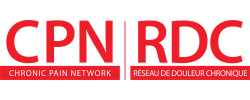| Return |
Patient Evidence Summary

Doctor, is medical marijuana an appropriate treatment for my child’s medical condition?
Medical marijuana may provide some benefit for children and adolescents with a range of medical conditions, such as nausea and vomiting due to chemotherapy, and seizures. The research on the effects of medical marijuana for children and adolescents is still very limited.
What is the evidence?
Researchers looked at children with a range of medical conditions who were treated with medical marijuana and compared them to children who were not treated with medical marijuana. They measured the benefits and harms of marijuana treatment. They found that:
- Cannabinoids may be more effective than other antiemetics to relief and prevent nausea and vomiting due to chemotherapy
- Cannabinoids may have some benefit for children with seizures, including those not responding to other treatments
- Some very small studies have looked at cannabinoids for spasticity, neuropathic pain, post traumatic stress, and Tourette syndrome. These studies were too small to tell whether there was any real benefit of medical marijuana for these conditions
- The most common side effects of medical marijuana are dizziness and drowsiness.
- The most important weaknesses of most of the studies were the absence of a control group and the small number of patients.
What kind of study was this?
This was a systematic review. A systematic review summarises all available studies on a health care intervention to provide high quality evidence on the effectiveness of that health care intervention.
Who participated in the study?
This review included 22 studies involving 795 children or adolescents with any kind of medical condition:
- 6 studies for nausea and vomiting due to chemotherapy
- 11 studies for seizures
- 2 studies for spasticity
- 3 studies of other conditions, including neuropathic pain and major depressive disorder, anxiety and sleep, and Tourette syndrome
How was the study done? The reviewers considered all studies that compared medical marijuana with any other medication, or “placebo”. The reviewers also included studies not directly comparing different treatments (uncontrolled studies).
Medical marijuana | vs | Other treatment |
|---|---|---|
Any kind of cannabis, including Tetra-Hydro-Cannabinoid (THC), nabilone, dronabinol, and cannabidiol (CBD). These included oral capsules or solutions, or oil extracts. | Some studies compared cannabis to placebo: A pill containing an inactive substance that has no effect. Some studies compared cannabis to antiemetics, which treat nausea and vomiting. Some of the studies were small studies without a comparison group, so all the patients received medical marijuana. |
Why was this research done?
Medical marijuana is becoming more common as a treatment for many different medical conditions for adults. It is unclear whether it is appropriate to use medical marijuana to treat medical conditions for children, as there have not been many studies done in children.
This Evidence Summary is based on the following article:
Wong SS, Wilens TE. Medical Cannabinoids in Children and Adolescents: A Systematic Review. Pediatrics. 2017 Nov;140(5). pii: peds.2017-1818. doi: 10.1542/peds.2017-1818. PubMed
Published: Thursday, August 30, 2018
Please note that the information contained herein is not to be interpreted as an alternative to medical advice from a professional healthcare provider. If you have any questions about any medical matter, you should consult your professional healthcare providers, and should never delay seeking medical advice, disregard medical advice or discontinue medication based on information provided here.
|
This Evidence Summary was printed from the PAIN+ CPN website on 2025/04/01. To view other Evidence Summaries or to register to receive email notifications about new Evidence Summaries, please visit us at https://www.painpluscpn.ca/Articles/EvidenceSummaries |

|






 , McMaster University
, McMaster University